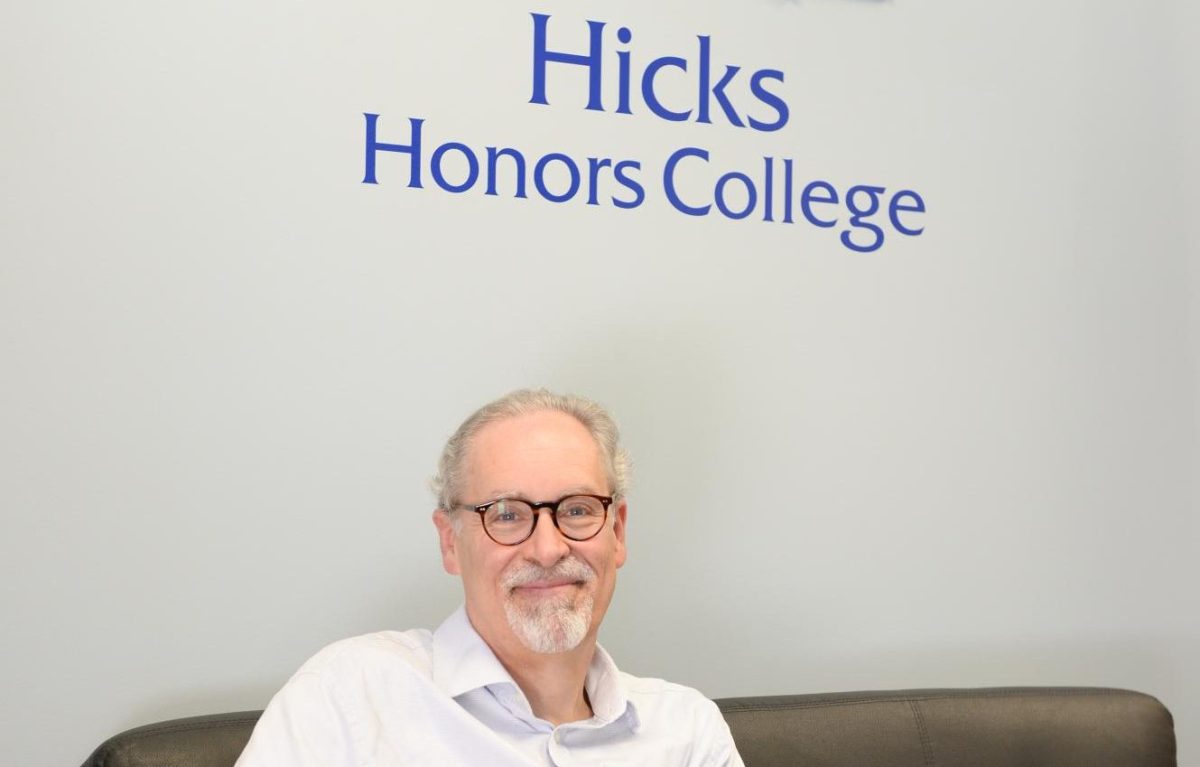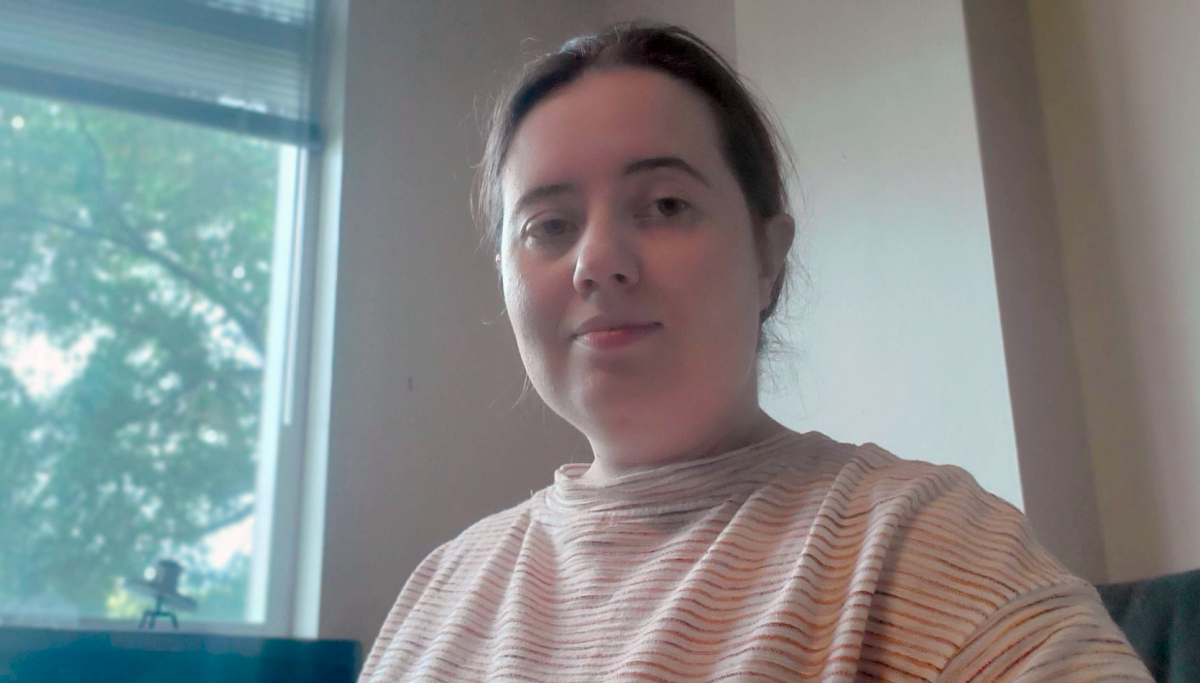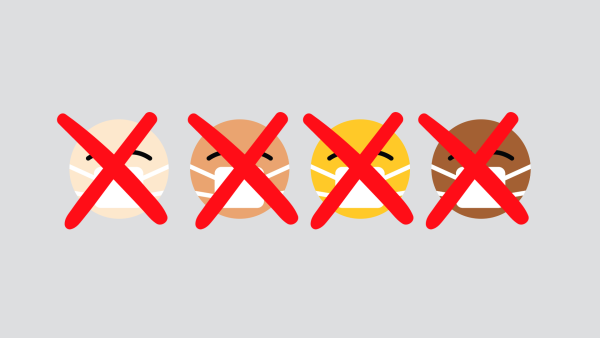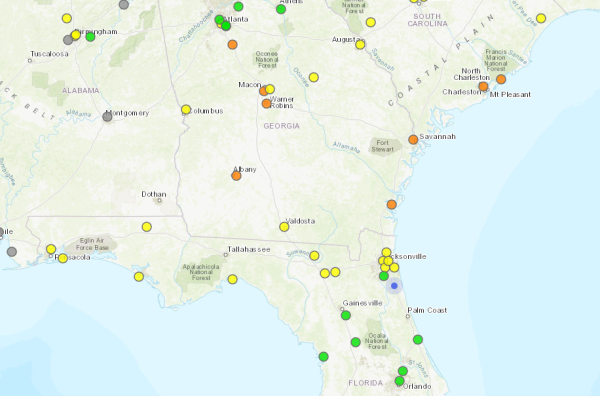How to end virus lockdowns? Technology, tests, coordination
April 14, 2020
BERLIN (AP) — Governments battling a virus that has crossed borders with breathtaking speed pinned their hopes Tuesday on tests, technology and a coordinated approach to ease the tight restrictions on movement that have slowed the outbreak but strangled the global economy.
While the European Union looked into creating a COVID-19 smartphone app that could function across the bloc, governors on both U.S. coasts pledged to work together as they planned an easing of the confinement of millions.
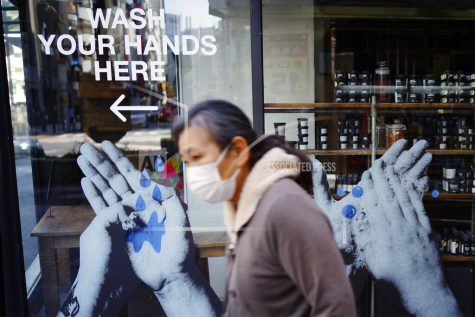
A woman wearing a face mask walks near a shop featuring a washing hands slogan Tuesday, April 14, 2020, in Tokyo. Japanese Prime Minister Shinzo Abe declared a state of emergency last week for Tokyo and some other prefectures to ramp up defenses against the spread of the coronavirus. (AP Photo/Eugene Hoshiko)
The main concern is to avoid a resurgence by the virus.
In India, the government extended the world’s largest lockdown on 1.3 billion people until May 3. In Britain, new data showed hundreds more people died of the virus than have been recorded in the government’s daily tally from hospitals. The dead include a wave of victims in nursing homes.
China faced a new flare-up along its remote northern border with Russia. The border has been sealed and medical units have rushed to the area to prevent travelers from returning with the virus.

Women wearing protective face masks to prevent the spread of the new coronavirus walk on a stretch of the Badaling Great Wall of China in Beijing, Tuesday, April 14, 2020. China reported dozens of new virus cases on Tuesday, most of them among travelers arriving from abroad, but no new deaths. (AP Photo/Andy Wong)
New infections appear to have leveled off in much of Asia and Europe, including Italy, France, Spain and Germany, said Dr. Sebastian Johnston, a professor of respiratory medicine at Imperial College London.
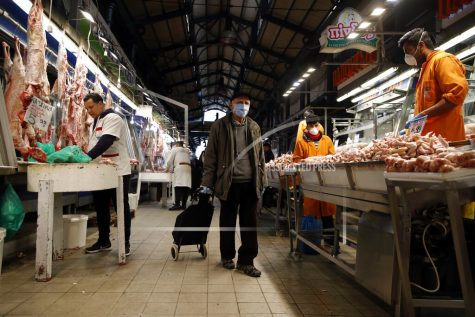
A elderly man wearing a face mask to protect from coronavirus pulls his shopping trolley at Varvakios meat market in Athens, on Tuesday, April 14, 2020. Eating lamb, usually roasted whole on a spit, is traditional for Greek Easter, which is by far the most important religious holiday of the year in this predominantly Orthodox country. Due to lockdown measures taken to prevent the spread of the COVID-19 this year, the government has said traditional family gatherings cannot be held this Easter on Sunday, April 19. (AP Photo/Thanassis Stavrakis)
Even in New York — where reported coronavirus deaths passed 10,000 on Monday — Gov. Andrew Cuomo declared the “worst is over if we can continue to be smart.” More than 23,000 people have died of the virus in the United States overall, with close to 600,000 confirmed infections, according to a tally by Johns Hopkins University.
With social distancing and lockdowns in place across much of the world, projections that the virus would spread with equal ferocity to other corners have yet to materialize. But without a vaccine or widespread antibody tests to determine how many people are immune to the virus, governments fear new outbreaks.
Germany’s foreign minister, Heiko Maas, called for a single smartphone app across the European Union.
“It’s important we don’t end up with a patchwork of 27 corona apps and 27 data protection regimes but coordinate as best as possible,” he told Germany’s Funke media group.
Maas said a contract-tracing app already being jointly developed by several countries showed that the EU “doesn’t have to copy the Big Brother methods of authoritarian states” but can instead safeguard both personal privacy and public health.
Lothar Wieler, head of the Robert Koch Institute, Germany’s disease control center, said constantly exchanging information among countries and institutions about best practices, vaccine studies and protecting vulnerable people is key.
The virus has also forced rival companies to work together. Two of the world’s biggest drug companies — Sanofi Pasteur and GSK — announced they will combine forces to work on a vaccine. And Apple and Google last week announced a joint effort to help public health agencies worldwide use Bluetooth wireless technology to trace the contacts of infected people.
In China, where new reported cases have dwindled, life is ruled by a green bar-code symbol on a smartphone screen that says a user is symptom-free and can board a subway, check into a hotel or just enter Wuhan, the city of 11 million where the outbreak began in December.
South Korea and Israel have both aggressively used smartphone data to track the movements of carriers. But epidemiologists say contact tracing must be combined with widely available testing, which has been lacking in places like the United States and Britain.
In Europe, officials pointed to positive signs as they started to reopen their economies.
In Italy, where the day-to-day count of infections has been trending downward, bookstores, stationery stores and shops selling baby supplies were allowed to open nationwide. Forestry workers, needed to clear dead trees ahead of the summer fire season, also returned to work.
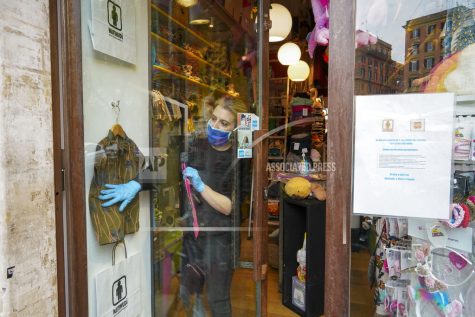
Camilla Cocchi wears a face mask and gloves as she sorts out clothing in her children’s clothes shop after it was allowed to reopen following lockdown measures to contain the spread of Covid-19, in Rome, Tuesday, April 14, 2020. In Italy, bookstores, stationary stores and shops selling baby clothes and supplies were allowed to open nationwide on Tuesday, provided they could maintain the same social-distancing and sanitary measures required in supermarkets. The new coronavirus causes mild or moderate symptoms for most people, but for some, especially older adults and people with existing health problems, it can cause more severe illness or death. (AP Photo/Andrew Medichini)
In Spain, where the official death toll rose to over 18,000, the country’s main epidemiology institute found an additional 1,500 “unexpected deaths” since mid-March after it studied mortality rates.
Spanish workers returned Monday to some factory and construction jobs. Stores and services were still closed, and the government required office workers to keep working from home.
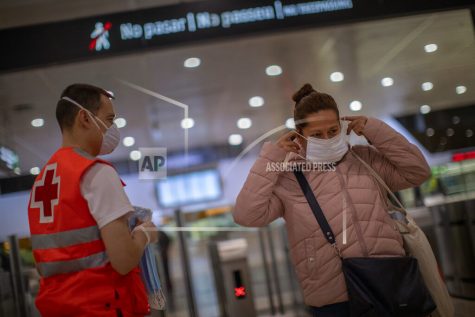
A passenger receives a face mask distributed by a red cross volunteer at the main train station in Barcelona, Spain, Tuesday, April 14, 2020. Face mask distribution in train and bus stations continue as factory and construction workers resume their activities in roughly half of Spanish regions emerging from the Easter holiday period. Spain’s left-wing Cabinet is expected to pass new measures to aide smaller business and the self-employed affected by the freezing of economic activity. (AP Photo/Emilio Morenatti)
In Austria, hardware and gardening stores reopened Tuesday. Chancellor Sebastian Kurz said the government is monitoring new infections closely, and “if the figures develop in the wrong direction, we will, of course, pull the emergency brake.”
In Britain, which started its lockdown later than the rest of Europe, new infections and deaths were still rising.
Britain as of Monday reported more than 11,300 deaths of COVID-19 patients in hospitals. But the head of one of the country’s biggest nursing home operators said Tuesday that the number of infections and deaths among the elderly is much higher than official reports.
In the United States, governors in the Northeast and along the West Coast announced separate state groups to coordinate reopenings.
California Gov. Gavin Newsom said he would announce a detailed plan Tuesday for lifting virus restrictions, using “science to guide our decision-making and not political pressure.”
“The house is still on fire,” New Jersey Gov. Phil Murphy said. “We still have to put the fire out “but also “make sure this doesn’t reignite.”
New Jersey is in a coalition with Connecticut, Delaware, Massachusetts, New York, Pennsylvania and Rhode Island to figure out how to reopen their economies while still fighting the virus. The governors of California, Oregon and Washington announced a similar plan.
President Donald Trump claimed the federal government has “absolute power” over easing restrictions. The Constitution, however, largely delegates such authority to states.
More than 1.9 million infections have been reported and over 120,000 people have died worldwide, according to Johns Hopkins University. The figures understate the true size of the pandemic, because of limited testing, uneven counting of the dead and concealment by some governments.
___
Hinnant reported from Paris while Blake contributed from Bangkok. Associated Press journalists around the world contributed to this report.
___
Follow AP coverage of the pandemic at http://apnews.com/VirusOutbreak and https://apnews.com/UnderstandingtheOutbreak








